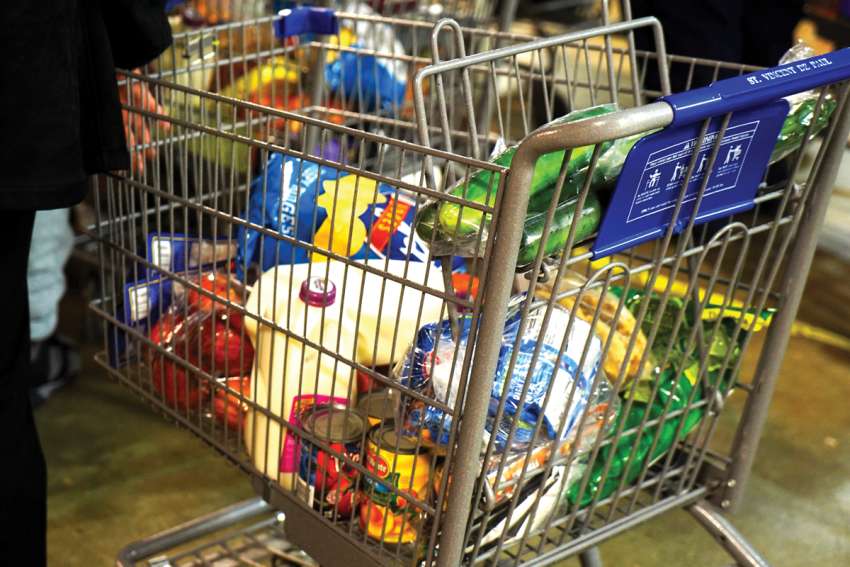In March 2023, there were more than 1.9 million visits to food banks across Canada, up 32 per cent from March 2022 and 78.5 per cent from March 2019, says the national charitable organization.
Interestingly, there was an increase of employed people using food banks, from 12 per cent of recipients in 2019 to 17 per cent in 2023. More than one-third of food bank clients were children. The number of two-parent households with children under 18 seeking food assistance had also gone up, from 18.8 per cent in 2019 to 21 per cent in 2023.
According to the organization’s survey, even those at higher income levels also reported being food insecure.
These trends challenge the stereotypical food bank client as being an unemployed, single-parent household living below the low-income cut off line. Not only are the numbers of food bank users at a record high, but people who normally wouldn’t require food-bank support now need to do so. In some cases, former donors have become recipients.
A huge problem is that rents take up a disproportionately large percentage of monthly income, especially low incomes.
According to the October 2023 report from Rentals.ca, rents increased by over 11 per cent from last year, for an average $1,889 for a one-bedroom apartment to $2,342 for a two-bedroom apartment.
But the rates are much higher in places such as Vancouver, $2,976 for a one bedroom and $3,908 for a two bedroom, and Toronto, $2,614 and $3,411 respectively.
Meanwhile, a Statistics Canada report released earlier this year says the median after-tax income of Canadian families and unattached individuals was $68,400 in 2021, meaning half of Canadians earned below that amount and half, above.
A family living in Toronto earning the median income of $5,700 per month could be spending around $3,411 on rent, leaving some $2,289 for utilities, insurance, car payments, clothing, daycare, health care, household supplies, entertainment and, of course, groceries.
The situation becomes more dire for that half of Canadians who earn below the median amount. The StatsCan report notes that “disposable income grew at a slower-than-average pace for the lowest quintile in 2022.”
The worst off are people whose income is social assitance. For Ontario Works, that ranges from around $733 to $1,501 per month and for the Ontario Disability Support Program (ODSP) $1,228 to $2,233 depending on the circumstances — not even enough to cover rent.
Whatever the amount people earn, it has to stretch further. StatCan’s Consumer Price Index (CPI) Annual Review 2022. reports an average 6.8-per-cent increase in CPI over the previous year, “a 40-year high.” Among the big-ticket increases? Transportation, up 10.6 per cent, food, up 8.9 per cent, and shelter, up 6.9 per cent.
After rent and other fixed costs are met, food is often the item that is sacrificed. The HungerCount report says many of those coming for food assistance eat one meal a day. In the case of one full-time customer service worker earning $21 an hour, her fixed monthly bills are $2,701 and income, $2,710, leaving “nine dollars a month before I pay for food.”
Governments and communities need to take a broad approach when tackling food insecurity.
Protecting agricultural land, supporting agricultural innovations, preventing price gouging by major grocery chains and dealing with inflation overall are some of the supports governments can provide.
Neighbourhood gardens and other programs can increase food access at the community level. For example, in St. Catharines, Ont., a Grade 5 class assignment at Edith Cavell Public School turned into a partnership with Niagara Region Public Health and the United Way to open “pop-up” markets in several schools.
Low-income families place orders with students for a small fee. With this payment and a United Way subsidy, students order fresh assorted produce in bulk, which costs around $5 for a large bag.
The housing supply needs to be expanded, not by paving over rich agricultural land to build massive single-dwelling homes, but by renovating empty buildings or constructing new multi-unit dwellings on land that has already been used.
We need to be vigilant about emerging technologies that could replace lower-income workers. Having supports for small, family-owned businesses and entrepreneurship will help increase the supply of jobs. Industry needs to provide a living wage.
These and other measures scrape the surface of our call to build a better society in which everyone has enough food to eat, a basic human right.
(Majtenyi is a public relations officer specializing in research at an Ontario university.)


